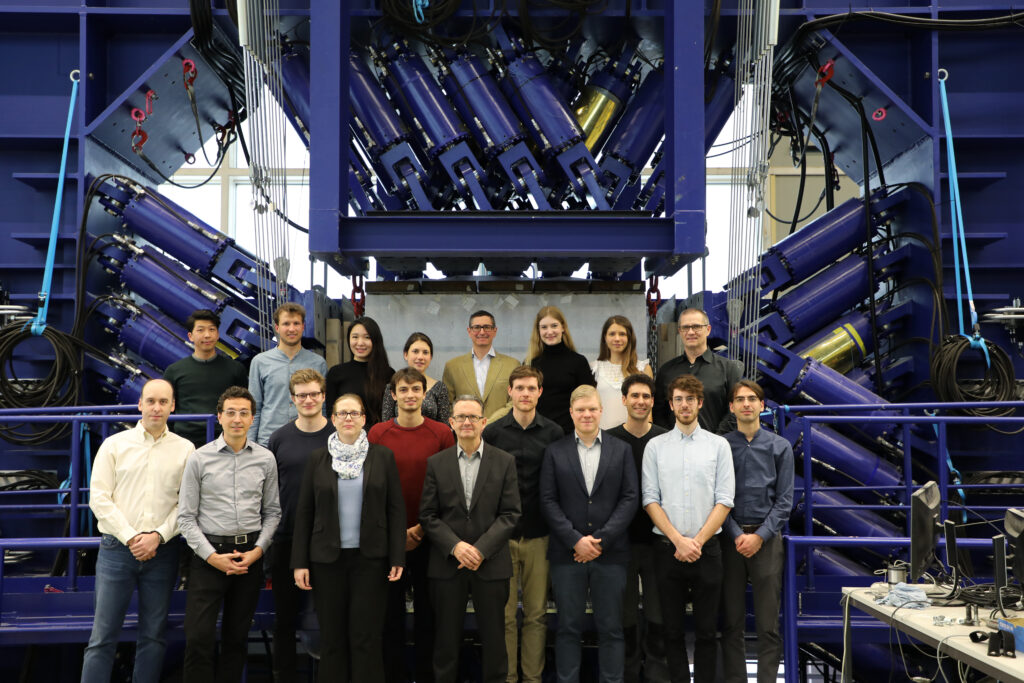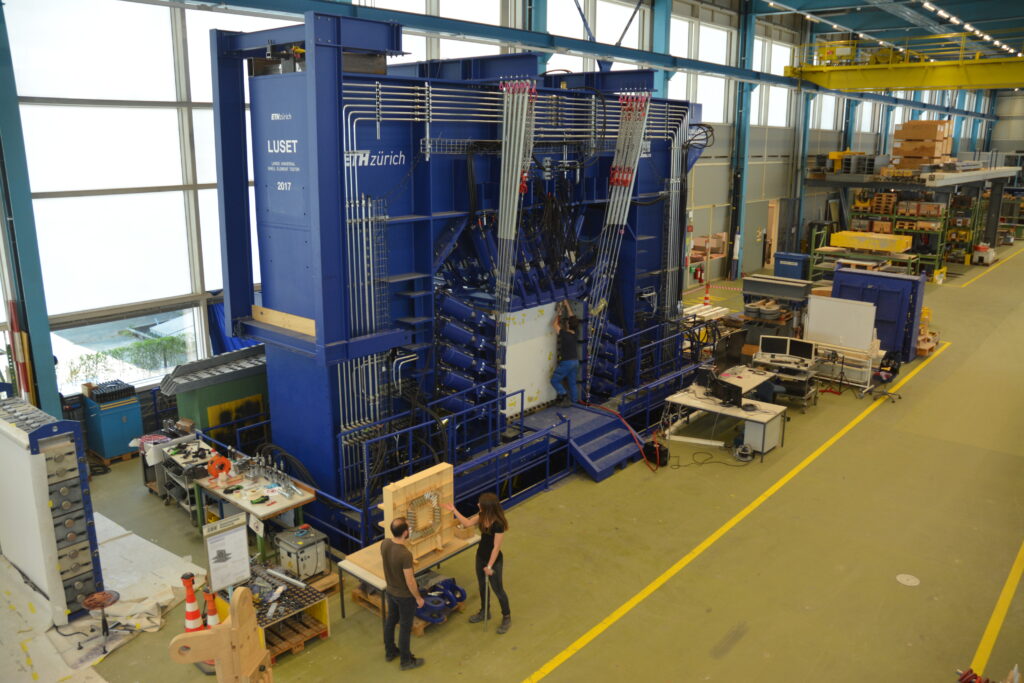Link zur deutschen Version: Bindeglied zwischen Hochschule und Praxis im konstruktiven Ingenieurbau
Are you a professional engineer, curious about recent developments in structural engineering at ETH Zürich? A Bachelor’s student in civil engineering, wondering if you should specialise in structures at our department? Or a structural engineer interested in pursuing a doctorate in one of our research areas? Or found this blog for other reasons? No matter why you are reading these lines: Welcome to the new blog of the Chair of Concrete Structures and Bridge Design at ETH Zurich!
Soon, you will find posts on a variety of topics here, such as recent findings and publications, activities in commissions, ongoing experimental research, new teaching content or reviews of exams. We will also share our thoughts and opinions on current relevant topics. Thereby, we wish to provide information on our activities and generate a platform for exchange and discussion in our domain.

In this introductory post, I want to introduce you to our main activities and explain why we consider starting this blog a necessity. Actually, the latter became obvious to me only recently: When I returned to ETH Zurich in 2014, after having spent more than 15 years working as a structural engineer, I had strong links to industry. Taking these connections for granted, I never imagined starting social media activities to foster the exchange with professional engineers. However, over the past years, I became increasingly aware that my former colleagues had no idea – or at most, a very vague and often wrong one – of our activities in research and teaching.
A while ago, a good friend and highly competent structural engineer bluntly told me that he, and most engineers in industry, had no clue about what was happening “on the Hönggerberg” (for non-ETH graduates: this is where we are located). I then asked my group members if they had received similar feedback from their fellow graduates active in industry, which they confirmed. We then started discussing possibilities to improve this situation and eventually, the idea of this blog was born.
But after all, what are these activities of our group that we want to let you know about? Teaching, research, and service.
Personally, I consider teaching as my most important duty, although an ETH professor’s academic reputation primarily depends on achievements in research. Actually, teaching at ETH is no duty, but rather a pleasure: Having the opportunity to teach bright, motivated young people is a privilege, and one of the most gratifying tasks imaginable.
According to the annual teaching evaluation by the students, our courses are among the most demanding of the department, which is no coincidence: I am convinced that students like to be challenged, rather than bored (which is also confirmed by the evaluation results). We strive to promote critical thinking and self-motivated learning which is not straightforward in these times when credit points being the currency of higher education.
More detailed information on how we try to accomplish this, and about our teaching in general, will follow in upcoming posts. If you are curious in the meantime, you may want to have a look at our e-learning platform https://concrete.ethz.ch/ and perhaps even check out the interactive apps https://concrete.ethz.ch/applikationen/.

As you might presume given my industry background, our research focuses on questions that we find relevant and practically important. It covers innovative topics but also includes what an eminent colleague once termed “bread and butter” topic research: Investigations of the behaviour of conventional concrete structures.
This is a necessity since the mechanical behaviour of concrete structures is far from being fully understood – which may be difficult to understand given the vast amount of existing concrete structures. For sure, we are able to design safe and efficient concrete structures today, particularly based on the lower bound theorem of plasticity theory (more on this in my next blog post).
However, when assessing the structural safety of existing structures, dimensioned and detailed decades ago using semi-empirical design rules, our modern design methods are rarely expedient, since these structures do not comply with their prerequisites.
Furthermore, existing structures are often subjected to combined loading, making the assessment of their real load-bearing capacity very challenging. Consequently, many existing concrete structures are considered structurally deficient.
However, strengthening or replacing a huge amount of structures without being sure whether this is really necessary is certainly not sustainable. Hence, a better understanding of the mechanical behaviour of concrete structures is essential to reduce the environmental impact of the building industry. Honestly, I think that it is even more urgent than the development of innovative, sustainable solutions.
Nonetheless, we are also doing the latter, and in either case, we typically combine mechanical models with large-scale experimental testing and computational analyses. You will find more information on our research fields and methodologies on our website https://kaufmann.ibk.ethz.ch/. They will be a main part of the future content of this blog.

Last but not least, we also provide services to industry and society. These activities range from top-level consulting – not competing with, but complementing industry expertise – to active participation in professional societies, expert bodies, and code commissions. Thereby, we want to contribute to the solution of our society’s challenges. We will also talk about these activities in future posts.
Rather, we want to generate a platform for exchange and discussion in structural engineering.
As said, the goal of this blog is not only to provide information on our activities but also to generate a platform for exchange and discussion in structural engineering. To this end, we encourage you to send us your feedback, be it positive or negative. We are also planning to include guest posts in this blog, and invite you to contact us if you are interested in authoring a contribution.
We hope that you like the idea of this blog, and will become a regular reader. Please let us know your opinion and wishes in the comment section below.
Walter Kaufmann